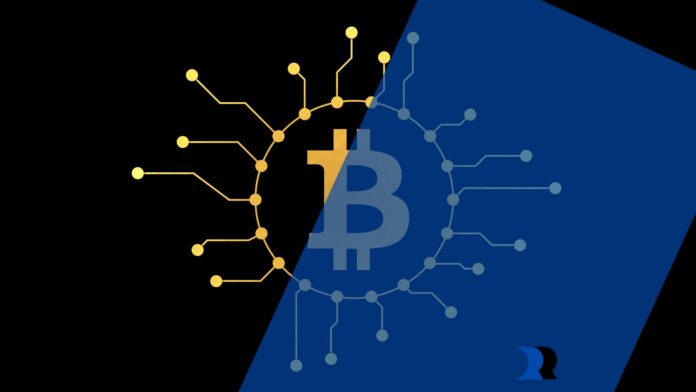Blockchain, fundamentally, is a decentralized ledger technology designed to secure and transparently record and verify transactions. This tamper-resistant system enhances trust among participants, with a clear understanding of its foundational aspects crucial for navigating regulatory intricacies. The rapid evolution of this technology emphasizes the necessity for explicit regulatory directives to ensure conscientious and ethical use. Regulatory frameworks, devoid of certain terminology, play a central role in structuring an environment fostering legitimacy while mitigating risks associated with blockchain’s decentralized nature. This article explores the historical, present, and future dimensions of blockchain regulations, offering valuable insights into the dynamic interplay between technology and governance. If you wish to learn about investing with education companies, you might consider visiting immediateprofit.io.
Historical Evolution of Blockchain Regulations
Early Days: Lack of Regulatory Clarity
In its nascent stages, blockchain operated in a regulatory gray area, with authorities struggling to comprehend and respond to its decentralized nature. The absence of clear guidelines led to uncertainty and hindered the technology’s broader adoption.
Milestones: Key Regulatory Developments Over the Years
Regulatory evolution witnessed pivotal moments, marked by governments acknowledging the potential of blockchain while grappling with its implications. From defining legal status to recognizing smart contracts, key milestones shaped the foundation for more comprehensive regulatory frameworks.
Global Variances: A Comparative Analysis of Regulatory Approaches
Different jurisdictions adopted diverse approaches to blockchain regulation, reflecting varying attitudes toward decentralization. A comparative analysis helps us understand the impact of regulatory choices on the global blockchain landscape.
The Role of Governments in Shaping Blockchain Policies
Regulatory Bodies and Their Influence
Governments, through regulatory bodies, have assumed a critical role in shaping policies that govern blockchain technology. Understanding the roles and responsibilities of these bodies provides insights into the regulatory decision-making process.
Governmental Perspectives on Blockchain: Opportunities and Challenges
Governments view blockchain as both an opportunity and a challenge. While recognizing its potential for efficiency and transparency, it also grapples with concerns related to security, privacy, and potential misuse.
Balancing Act: Nurturing Ethical Development while Ensuring Compliance
Regulators face the delicate task of fostering ethical blockchain development without stifling innovation. Striking a balance between encouraging progress and enforcing compliance is crucial for sustained and responsible growth.
Regulatory Challenges in the Blockchain Sphere
Privacy Concerns and Data Security
Privacy and data security stand out as significant challenges in the blockchain sphere. Addressing these concerns requires the formulation of regulations that protect user data while upholding the principles of decentralization.
Anti-Money Laundering (AML) and Know Your Customer (KYC) Regulations
The decentralized nature of blockchain poses challenges to traditional AML and KYC regulations.

Regulatory frameworks must adapt to ensure that these essential safeguards against illicit activities remain effective.
Cross-Border Transactions: Regulatory Harmonization Challenges
Blockchain’s borderless nature introduces challenges for regulators attempting to harmonize regulations across jurisdictions. Coordinating efforts on an international scale is crucial to creating a seamless global regulatory framework.
Blockchain and Financial Regulation
Central Bank Digital Currencies (CBDCs): A Regulatory Perspective
The advent of CBDCs adds a new dimension to financial regulations. Regulators must navigate the integration of central bank-issued digital currencies into existing financial systems while addressing potential risks and ensuring stability.
Decentralized Finance (DeFi) and Regulatory Dilemmas
DeFi introduces innovative financial services outside traditional banking structures, presenting regulatory dilemmas. Striking a balance between fostering DeFi growth and safeguarding financial stability requires thoughtful regulation.
Token Offerings and Securities Regulations
Token offerings pose challenges to existing securities regulations. Defining the regulatory status of tokens and ensuring investor protection are paramount considerations in this dynamic landscape.
Emerging Trends and Regulatory Responses
NFTs (Non-Fungible Tokens) and Intellectual Property Considerations
The rise of NFTs introduces novel challenges related to intellectual property. Regulators must explore ways to protect creators’ rights while fostering the burgeoning NFT market.
Environmental Concerns: Regulatory Measures for Sustainable Blockchain
The environmental impact of blockchain, particularly proof-of-work consensus mechanisms, necessitates regulatory measures to promote sustainability. Stricter guidelines can incentivize the adoption of eco-friendly alternatives.
Regulatory Sandboxes: Facilitating Responsible Experimentation
Regulatory sandboxes provide a controlled environment for experimentation within set boundaries.

Exploring their potential can facilitate responsible innovation while allowing regulators to observe the impact of new technologies.
The Future Landscape of Blockchain Regulations
Predictions and Speculations: Where Are We Headed?
Predicting the future of blockchain regulations requires a comprehensive analysis of technological advancements and societal trends. Examining current trajectories enables us to make informed speculations about the future regulatory landscape.
Global Cooperation: The Need for Standardized Regulatory Approaches
As blockchain transcends national borders, the need for global cooperation in regulatory efforts becomes paramount. Establishing standardized approaches ensures a cohesive and interoperable framework for the evolving blockchain ecosystem.
Adaptive Regulation: Remaining Agile in the Face of Technological Evolution
To thrive in the ever-evolving blockchain landscape, regulatory frameworks must be adaptive. Embracing flexibility and staying attuned to technological advancements allows regulators to respond effectively to emerging challenges.
Conclusion
In conclusion, a succinct recapitulation of the article’s key insights illuminates the intricate relationship between regulatory frameworks and the ever-evolving blockchain ecosystem. A resounding call to action echoes, advocating for collaborative efforts between blockchain industry stakeholders and regulators. This collaboration proves indispensable in formulating equitable and effective regulatory frameworks, ensuring their alignment with the relentless progress of technology and the specific needs of the industry. The final reflections on the perpetual interplay between blockchain and regulation underscore the significance of adaptive governance in steering a conscientious and sustainable path forward for blockchain technology.


